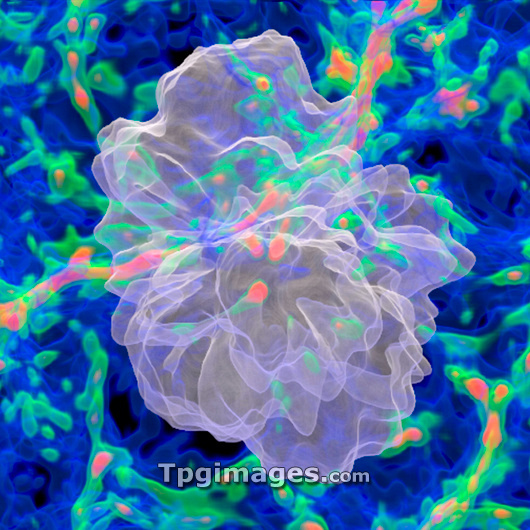
Early star formation, image 1 of 3. Supercomputer simulation of the birth of a first generation star known as a Population III star. This image shows the effect of a 2.2 million year-old, 200-solar- mass star (unseen at centre) on the region surrounding it. Neutral stellar gas is shown (blue is low density, orange to green is high density). The frame is 45,000 light-years across. Ultraviolet radiation from the star creates a bubble of ionised gas (translucent white) in the surrounding space. Population III stars were thought to be the first stars in the universe. Calculations suggest they were brighter, hotter and several times more massive than today's most luminous stars. As Population III stars exploded into massive supernovae, known as hypernovae, they dispersed heavy elements and initiated the process that would make planets and life possible. (See images R590/112-R590/114).
| px | px | dpi | = | cm | x | cm | = | MB |
Details
Creative#:
TOP03224743
Source:
達志影像
Authorization Type:
RM
Release Information:
須由TPG 完整授權
Model Release:
N/A
Property Release:
N/A
Right to Privacy:
No
Same folder images:

 Loading
Loading